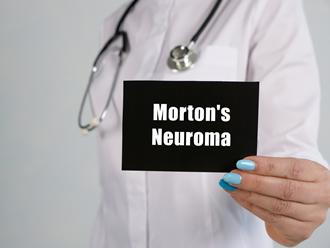
Are you experiencing a sharp, burning pain between your toes that gets worse when walking or standing? Do you notice tingling or numbness in the toes, or pain and swelling on the soles of the feet? If so, you could be dealing with a condition known as Morton’s neuroma that causes thickening of the nerves between the toes. If you suspect that you might have Morton’s neuroma, a podiatrist will be the ideal doctor to turn to for treatment.
Are neuromas dangerous?
It’s important not to confuse a neuroma with Morton’s neuroma. A neuroma is a benign but painful growth of the nerve bundles located between your toes.
What causes Morton’s neuroma?
Any kind of intense pressure or compression placed on these toes can lead to inflammation of the tissue around the nerves. Some people are more at risk for developing Morton’s neuroma. Risk factors include:
- Shoes, Shoes Shoes! Wearing a narrow toe box of any sort ( even your favorite tennis shoe )
- Participating in sports in narrow shoes, such as soccer or baseball cleats
- improper biomechanics during running or tennis, which puts pressure on the balls of the feet
- Wearing high heels of any sort ( sorry ladies- but your heels do not love you back)
- Wearing narrow shoes or shoes with pointed toes ( inappropriate toe-box )
- Certain foot conditions such as bunions or hammertoes change biomechanics and cause nerve pinching
- Genetics ( thanks mom and dad!)
What are the signs of Morton’s neuroma?
Since this condition involves inflamed tissue, you won’t notice a growth or bump in the area; however, you may simply experience pain that is gradual and minor at first and is alleviated by not wearing shoes. Symptoms often get worse with time and result in:
- Swelling between the toes or at the ball of the foot
- A sharp burning pain between the toes that gets worse with activity
- Tingling or numbness in the toes or ball of the foot
- Feeling like there is a pebble or stone in your shoe (often at the balls of the feet)
- Pain that’s intensified by standing on your tiptoes or wearing high heels or pointed-toe shoes
How is this foot problem treated?
Most people can alleviate their symptoms through simple lifestyle modifications including:
- Changing your shoe gear to an anatomically correct toe-box ( Most Important step for a pain free step )
- Icing
- Resting the foot
- Shoe pads
- Custom shoe inserts (that a podiatrist can craft just for you)
- Non-steroid anti-inflammatory drugs
- Cold Laser Therapy for Pain Management
- Surgical Intervention
Any persistent or severe foot pain or swelling, along with numbness or tingling, should be addressed right away by a podiatrist. There are many conditions that can cause these symptoms and a podiatrist will be able to provide an immediate and accurate diagnosis of what is causing your foot pain.
